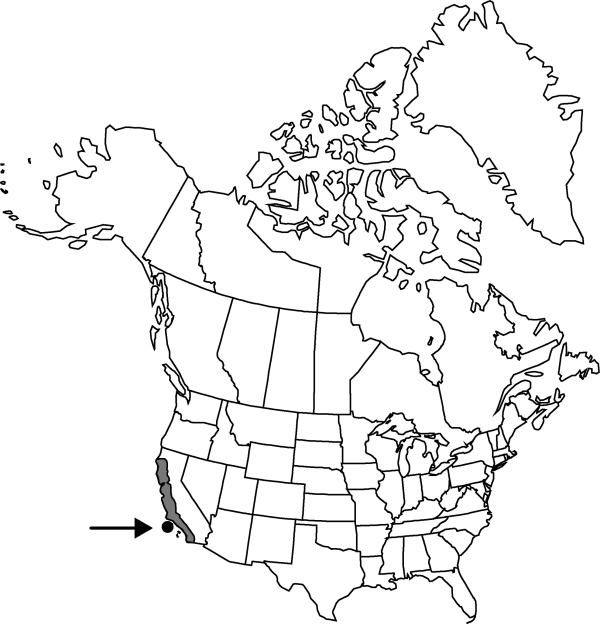Difference between revisions of "Calandrinia breweri"
Proc. Amer. Acad. Arts 11: 124. 1876.
imported>Volume Importer |
imported>Volume Importer |
||
| Line 56: | Line 56: | ||
|publication year=1876 | |publication year=1876 | ||
|special status=Illustrated | |special status=Illustrated | ||
| − | |source xml=https:// | + | |source xml=https://bitbucket.org/aafc-mbb/fna-data-curation/src/2e0870ddd59836b60bcf96646a41e87ea5a5943a/coarse_grained_fna_xml/V4/V4_908.xml |
|genus=Calandrinia | |genus=Calandrinia | ||
|species=Calandrinia breweri | |species=Calandrinia breweri | ||
Latest revision as of 23:01, 5 November 2020
Stems prostrate to ascending, 10–45 cm. Leaf blades ± ovate to spatulate, 2–8 cm, glabrous. Flowers: sepals 4–6 mm; petals 3–5 mm; stamens 3–6; pedicel usually curved in fruit, 6–20 cm. Capsules usually exceeding calyx by 3+ mm. Seeds 10–15, 1–2 mm wide, partially or totally finely tuberculate at 30×.
Phenology: Flowering spring.
Habitat: Sandy to loamy soils, disturbed places, especially burns
Elevation: 20-1100 m
Distribution

Calif., Mexico (nw Baja California).
Discussion
Calandrinia breweri is very similar to C. ciliata. In C. breweri, the fruit usually exceeds the calyx by 3 mm or more; in C. ciliata the fruit scarcely exceeds the calyx or does so by less than 3 mm. The most consistent character separating these two species is seed surface morphology viewed at 30×: Calandrinia breweri seeds are tuberculate to some degree, whereas C. ciliata seeds have a reticulate, nontuberculate surface.
Selected References
None.
